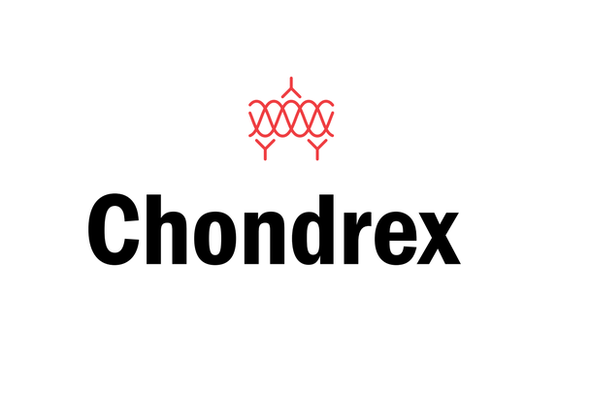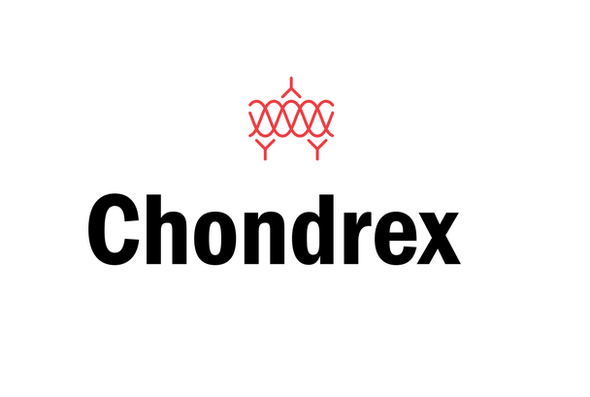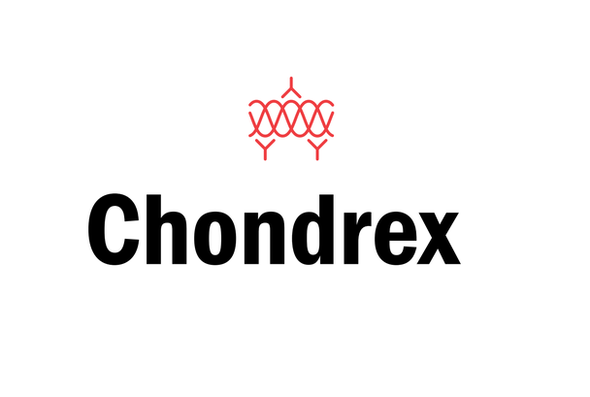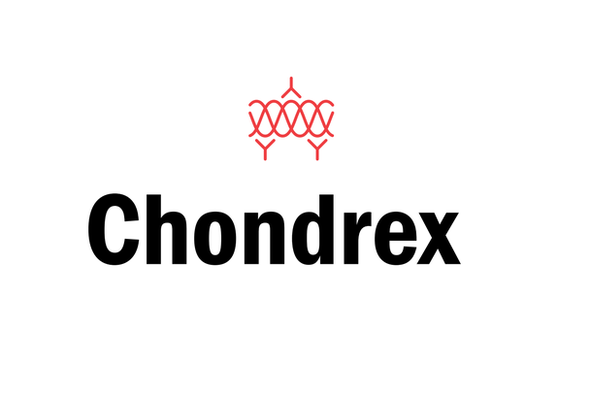Description
SEA Detection Kit - Cat Number: 6029 From Chondrex.
Research Field: Bacterial Research
Clonality: N/A
Cross-Reactivity:
Host Origin: N/A
Applications: N/A
Isotype: N/A
Detection Range: 10 ng/ml-0.6 ng/ml
Sample Type: Liquid Samples
Concentration: N/A
Immunogen:
PRODUCT SPECIFICATIONS
DESCRIPTION: ELISA kits to quantify SEA and SEB in samples
FORMAT: Pre-coated 96-well ELISA Plate with removeable strips
ASSAY TYPE: Sandwich ELISA
TIME: 1.5 hours
STANDARD RANGE: 10 ng/ml to 0.16 ng/ml
NUMBER OF SAMPLES: Up to 40 (duplicate) samples/plate
SAMPLE TYPES: Liquid samples
RECOMMENDED SAMPLE DILUTIONS: 1:1 (at least)
CHROMOGEN: TMB (read at 450 nm)
STORAGE: -20°C
VALIDATION DATA: 6029: Intra-Assay (1.3-3.7%)/Inter-Assay (4.1-7.8%)/Spiking Test (92-103%)
6030: Intra-Assay (1.2-2%)/Inter-Assay (1.1-8.6%)/Spiking Test (98-100%)
INTRODUCTION
The contamination of pathogenic microorganisms and their toxins in food and water is a serious issue for human health and safety (1, 2). For instance, enterotoxins (SEs) produced by Staphylococcus aureus (S. aureus) are heat-stable, meaning pathological activity remains even after exposure to sterilization techniques and digestive proteases. Among the SEs, staphylococcal enterotoxin A (SEA) and B (SEB) are confirmed toxins which cause enteritis and food poisoning. Symptoms include nausea, vomiting, diarrhea, which in severe cases, may lead to fatalities in children and the elderly (3-5). These SEs, known as superantigens, non-specifically activate Tcells, leading to proliferation which ultimately results in T-cell elimination. This activation directly and indirectly induces a massive release of inflammatory cytokines (6). In addition to acute poisoning, researchers reported that these toxins may play roles in the pathogenesis of autoimmune diseases.
More specifically, intestinal dysbiosis (enteromicrobial imbalance) was found in patients with rheumatoid arthritis (RA) and which may overwhelm the host immune defense functions by chronic exposure to excess amounts of these pathogens (7, 8). In animal models, SEs synergistically play a role in the pathogenesis of autoimmune-related diseases (9), such as atopic dermatitis (8, 10), food allergies (11, 12), colitis (13, 14), arthritis (11, 15-17), and systemic lupus erythematosus (11, 18). Several methods exist for detecting pathogenic microorganisms and their toxins, such as polymerase chain reaction PCR), mass spectrometry, biosensor-based techniques, reversed passive latex agglutination, and enzyme-linked immunosorbent assay (ELISA) (5, 19). Of these techniques, PCR is ideal to detect the presence of microorganisms through their DNA or RNA.
On the other hand, ELISA is widely used for detecting toxins in samples because of its high assay sensitivity and simplicity. For example, ELISAs were used to assay SEB in food samples as well as synovial fluids, sera, and urine from RA patients (6, 19). Chondrex, Inc. provides ELISA kits for detecting SEA and SEB (Catalog# 6029, 6030) in food, feces, intestinal fluids, and other liquid samples. Chondrex, Inc. also provides mouse anti-SEA and SEB IgG antibody and IgG subtype antibody ELISA kits and a S. aureus IgG antibody ELISA kit. For further requests and consultation, please contact us at support@chondrex.com or visit www.chondrex.com
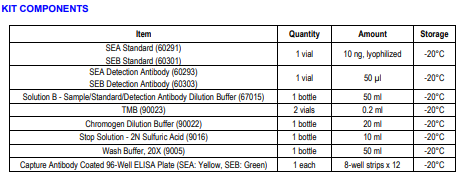
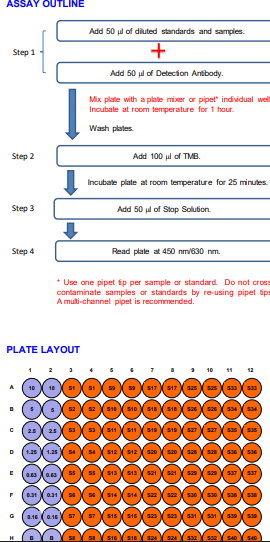
NOTES BEFORE USING ASSAY
NOTE 1: It is recommended that the standard and samples be run in duplicate.
NOTE 2: Warm up all buffers to room temperature before use.
NOTE 3: Crystals may form in Wash Buffer, 20X when stored at cold temperatures. If crystals have formed, warm the wash buffer by placing
the bottle in warm water until crystals are completely dissolved.
NOTE 4: Measure exact volume of buffers using a serological pipet, as extra buffer is provided.
NOTE 5: Cover the plate with plastic wrap or a plate sealer after each step to prevent evaporation from the outside wells of the plate.
NOTE 6: For partial reagent use, please see the assay protocol’s corresponding step for the appropriate dilution ratio. For example, if the
protocol dilutes 50 µl of a stock solution in 10 ml of buffer for 12 strips, then for 6 strips, dilute 25 µl of the stock solution in 5 ml of buffer.
Partially used stock reagents may be kept in their original vials and stored at -20⁰C for use in a future assay.
NOTE 7: This kit contains animal components from non-infectious animals and should be treated as potential biohazards in use and for disposal.



